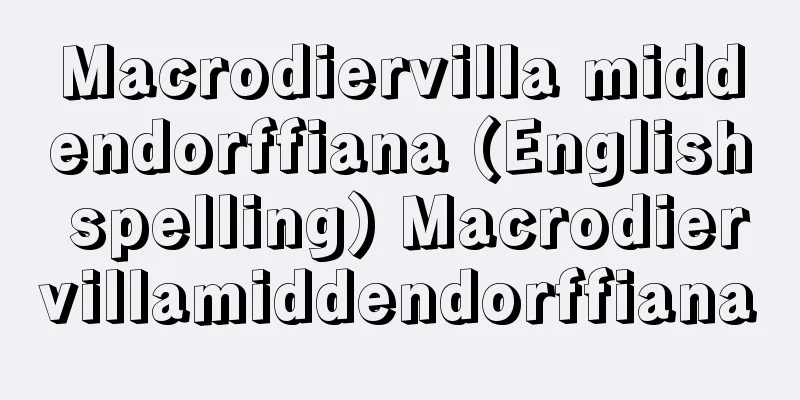Hakama - Hakama

|
It is a type of Japanese clothing and is worn for the lower body. It is a lower garment consisting of two parts, a top and a bottom. A garment with a crotch that is worn by passing each leg through is called a hakama, while a garment without a crotch is called a mo. During the Kofun period in Japan, men wore kinu hakama and women wore kinu mo. Later, under the clothing regulations, the loincloth was replaced by hakama. There have been many changes from ancient times through the early modern period to the present day. In the society of nobles, women wore hakama as their skirts were pulled back to reveal them, and they were an indispensable part of the attire of ladies-in-waiting from the Heian period onwards. After the Kamakura period, the skirt gradually fell away, and ladies-in-waiting at the Imperial Court began to wear uchikake and hakama as their formal attire. For women of the samurai class and in general, with the development of kosode, uchikake kosode became their formal attire, and hakama was no longer used. This led to the Japanese clothing worn by women today. [Yasu Fujimoto] TransitionBoysMen's loincloths in the Kofun period were loose, wide trousers. According to the figures of men in the Tenjukokushucho, the Asuka period hakama had pleats between the robe and the hakama, but later the pleats were no longer worn. This is because the length of the robe became longer and the hakama became thinner in accordance with the Han style. This style of hakama opens in the front and the waist (string) is tied at the waist. The oguchi hakama and ue no hakama (front hakama), which are elements of the men's sokutai, have different styles, and the oguchi hakama is a lower hakama with a lined lining made of the same fabric. The gussets are square, the waist is tied at the waist, and it is tied at the side. The front hakama is lined, but the fabrics and colors of the front and back are different. The crotch is long and narrow, with the back sewn together on both sides, but the front is sewn to the waist on both sides and opens to the left and right. The waist is one piece, overlapping the front and tying at the side. In 684 (the 13th year of Emperor Tenmu's reign), the plain clothes regulations state that kukuri obakama (tied-stringed hakama) and sashi-nuki (tied-stringed sashi-nuki) are hakama worn by men of no rank. These were also hunting hakama used for falconry, but when they came to be used by nobles, they were made of woven silk and were widely worn with kikan, cloth hakama, and noshi. The sashi-nuki is eight-width and long, and when the string at the hem is pulled and tied, it becomes wider, making it suitable for zarei (sitting ceremony). It is usually tied around the ankles, but it was sometimes made into a bag shape and stepped on while walking without exposing the feet. The sashinuki of the samurai class were six widths wide, four in the front and two in the back, narrower than those of the nobility, making them easier to move around in, and the waist (strings) of the hakama came to be divided into front and back strings like today's hakama. This style of hakama was also used by the general public because it made it easier to move around in and out, and was also called yakkobakama. Among the common people, thin four-width hakama, two in the front and two in the back, were used. The Shosoin treasures include awase, hitoe, with or without crotch, and open-legged and closed-legged styles. They are made to be tied at the side with a single waist. This style of waist is passed down in the oguchi-hakama and omotebakama of sokutai and the hakama of nyobosho. The crotch shape of the white linen hakama remaining in Shosoin is square. Square crotches are folded in half to make a triangle and sewn to the front and back crotches. Square crotches are used on the oguchi-hakama of the under-bakama of sokutai, the kariginu of samurai, hitatare, daimon, suou and kamishimo hakama. The crotch of the outer hakama of the sokutai is made by overlapping two long rectangular pieces, sewing the two pieces together at the back, attaching the left and right sides at the front, attaching the waist so that the front is open, and hanging the crotch down and overlapping the two pieces at the center (lower part) of the crotch length. This type of crotch is only used for the outer hakama. During the Heian period, the outer hakama and sashinuki were worn under the jacket, but in the samurai era, the style of wearing the hakama over the jacket began to take hold. Like the former, kariginu is worn with the hakama underneath, but the suikan, a type of kariginu, wears the hakama over the robe. This is called "wearing the top (kami) under the bottom (shimo)," and the same is true for hitatare, o-mon, sufusuma, and kamishimo. Mizukan came to be worn as work clothes in the Heian period, when serving the shogunate in the Kamakura period, and as formal wear in the Muromachi period. The waist of the hakama for kariginu, mizukan, hitatare, and o-mon is made of white silk. The waist of the hakama for sufusuma and kamishimo is made of the same fabric. The hakama for samurai costumes is also tailored differently from that for nobles, with small hakama that have separate strings in the front and back and are more convenient for activities. Kobakama is called sashiko (fingers) and is an abbreviation of sashinuki. A waist board was inserted into the core to shape the back of the kobakama. Around the end of the Muromachi period, the length of the hitatare kobakama gradually became longer, and the trend of long hakama with trailing hems for use in the palace arose. In the Edo period, the Nagahakama became the formal attire of samurai. The Sōfusuma, a type of hitatare used in the samurai's official clothing, had the family crest dyed in five places on the back and the front and back of both sleeves, and chrysanthemum stitching was applied over these. The chrysanthemum stitching was attached where the pieces of cloth were sewn together. The Nagahakama had the crest in three places, the center of the waist and on both sides of the aibiki, and chrysanthemum stitching was applied over the family crest on the sides. The waist board that was used as the core of the back waist was exposed, and the shape was refined to the trapezoid waist board of today, and the strings on the back waist were separated into left and right, and attached to both ends of the waist board along with tsukebishi (diamonds). During the Muromachi period, sleeveless kataginu and hakama appeared, and sofusuma replaced hitatare as formal attire, and later kataginu hakama replaced sofusuma as formal attire. As kataginu hakama became formal attire, kosode, which had not been visible from the outside, became visible. During the Edo period, formal attire for kamishimo consisted of noshime kosode and hemp nagakami over it. The pleats in the hakama began around the Kan'ei period (1624-1644), and after the Shotoku and Kyoho periods (1711-1736), they were placed in the center of the hakama, and the style was established. (Kami) and (shimo) refer to kataginu and hakama, and when kataginu and nagahakama are worn, it is called nagakami, and when kataginu and kobakama (hanhakama) are worn, it is called hanhakama. Han-hakama became common, and kataginu and hakama, made of different materials, came to be worn together. This is called tsugikamishimo. Eventually, hakama became independent from han-hakama and were worn over kosode. This type of hakama is called hira-hakama (regular hakama). Both samurai and townspeople began to wear hakama, but those with low crotches were called townspeople's tailoring. At first, samurai did not wear this type of hakama, but after Tenmei (1781-1789) they began to wear them. However, wearing them meant that one could not ride a horse. Around the Kanbun era (1661-1673), Matsubaya Riemon of Shiba Shinmei-cho, Edo, invented and tailored a unique type of hakama for horseback riding, which was well-received for its convenience while riding and was used by samurai. These pants had high crotches so that the shins would not be exposed even when on horseback, and were called Umanori Bakama. A thin board was attached to the top of the back of Umanori Bakama, which is shaped like a cicada and is therefore commonly called Cicada-shaped. Hakama worn when walking are intermediate between Umanori Bakama and Hira Bakama, with the crotch height lower than Umanori Bakama and higher than Hira Bakama. These are called Han Umanori Bakama. The height of the sohiki differs depending on the height of the crotch. Those with high crotches also have high sohiki, and Hira Bakama with low crotches have a smaller sohiki. Umanori Bakama and Han Hakama are made with a lined lining using donsu and woven patterns, and the hems are edged with black velvet. Other types of hakama using Tozan are also made with a lined lining. The coarse ones mainly use vertical stripes of Kokura cotton, which is worn in both summer and winter. Nobakama are flat hakama with a hemline attached. Higher-ranking nobakama made of donut or brocade were worn, while lower-ranking ones were striped. Townspeople who were patronized by the shogunate wore haori and striped nobakama when attending work on weekdays. In addition, both samurai and commoners wore nobakama when dressed for firefighting. Fumikomi hakama are slightly narrower than nobakama, and have a narrow hemline. These are also called susoboso (thin hem) and were popular during the Genbun era (1736-1741) and were worn by samurai. Tattsuke, also called Iga hakama or karusan, is a type of hakama that was created under the influence of the Nanban style when people from the south came to Japan from the south. The part below the knee is like a habaki, and the bottom and hem are tied with strings. It was made from deerskin, cotton, satin, and Chinese weave. It was also used in the 16th century during the time of Oda Nobunaga and Toyotomi Hideyoshi. At the beginning of the Edo period, the kimono was worn by samurai when traveling, by craftsmen, woodcutters, hunters, and by sumo referees. It then spread to the general public. [Yasu Fujimoto] WomenIn the past, women's hakama were an essential part of the attire of aristocratic society, but they disappeared when kosode and obi began to be worn during the Muromachi period. After the Meiji period, the school system was established along with the introduction of Western culture, and women began to attend school. Around the middle of the Meiji period, the hakama with crotches that girls wore to school, similar to those worn by boys, was improved upon and easy-to-wear crotchless hakama began to be worn. Boys also began to wear these hakama on a daily basis, and they are called machinashi hakama or andon hakama. Nowadays, everyday wear has become Western-style, but machiari hakama are indispensable for boys' formal wear. They are also worn as formal attire for 5-year-old boys on the Shichigosan festival. Girls only wear them for school graduation ceremonies and koto performances. In more specialized settings, traditional hakama are used in the uniquely Japanese arts of kendo, kyudo, noh, shimai, and suodori, as well as in the costumes of Shinto priests, sumo yobidoshi, and sumo referees. [Yasu Fujimoto] ``Outline of the History of Clothing'' by Morikazu Goto (1943, Shikai Shobo) ▽ ``Ruijyu Early Modern Fashion History (Morisada Manko)'' by Morisada Kitagawa (1928, Buncho Shoin) ▽ ``Revised Kishyu Shoran'' by Shinsetsu Kitamura (1927, Rokugokan)'' [Reference items] | | | | | | |©Shogakukan "> Names of the parts of the Andon Hakama (for men) ©Shogakukan "> Names of each part of the horse riding hakama ©Shogakukan "> How to wear hakama ©Shogakukan "> How to fold hakama Source: Shogakukan Encyclopedia Nipponica About Encyclopedia Nipponica Information | Legend |
|
和服の一種で下半身衣である。上下二部で成り立っている衣服の下衣で、股(また)があり両足をそれぞれ通してつける衣を「はかま」といい、股のないものを裳(も)という。日本の古墳時代の男子は衣褌(きぬはかま)、女は衣裳(きぬも)の服装であった。その後、服制により褌から袴に変わった。古代から近世を経て今日までに多様の変遷がみられる。 女子は公家(くげ)社会において、裳の後退により袴が表出し、平安時代以降の女房装束構成要素の一部として、なくてはならないものであった。鎌倉時代以後しだいに裳が脱落し、宮廷の女房は衣(袿)袴の姿を正装とするようになった。武家および一般の女子においては、小袖(こそで)の発達に伴い打掛小袖姿を正装とし、袴を用いることはなかった。これが今日の女子の和服につながる。 [藤本やす] 変遷男子古墳時代の男子の褌は緩やかな太いズボン形式のものであった。飛鳥(あすか)時代の袴は、『天寿国繍帳(てんじゅこくしゅうちょう)』にある男子の姿によれば、衣と袴の間に褶(ひらみ)を着しているが、その後、褶は着なくなる。これは、漢族の形式によって衣の丈が長くなり、袴が細めになったためである。この袴の形式は前で開き、腰(紐(ひも))は一腰で結ぶようになっている。男子束帯構成の要素となっている大口袴、表袴(うえのはかま)はそれぞれ形態を異にしており、大口袴は下袴で共布引返しに仕立てられた袷(あわせ)である。襠(まち)は角襠、腰は一腰で脇(わき)で結ぶ。表袴は袷であるが、表裏の布地、色ともに異なる。襠は長方形の幅の狭い丈長で、後ろは左右いっしょに縫い付けるが、前は左右それぞれ腰に縫い付けて左右に開く。腰は一腰で前を重ね合わせ脇で結ぶ。684年(天武天皇13)の服制の平服に括緒袴(くくりおばかま)とあり、指貫(さしぬき)は括緒の奴袴(さしぬき)で無位の男子の袴である。これは鷹狩(たかがり)に用いた狩袴でもあったが、公家が用いるようになると絹織物でつくられ、衣冠、布袴(ほうこ)、直衣(のうし)などに広く着用された。指貫は八幅(やの)で丈を長くし、裾口(すそぐち)の紐を引き絞って結ぶと広くなり、座礼に適した。普通は足首で縛るが、足を出さないで袋状にして踏んで歩いたりした。武家の指貫は前四幅、後ろ二幅の六幅で、公家の指貫より幅が狭くなっているから、活動しやすく、また袴の腰(紐)は今日の袴のように前後に分かれて紐がつけられるようになった。この指貫形式の袴は起居動作がしやすくできているところから、一般にも用いられ、奴袴(やっこばかま)ともいわれた。庶民の間では前二幅、後ろ二幅の四幅袴の細身のものが用いられた。 正倉院宝物の袴には袷、単(ひとえ)、襠のあるもの・ないもの、および開股(かいこ)式と閉股(へいこ)式とがある。腰は一腰で脇で結ぶように仕立てられている。この腰の形式は、束帯の大口袴、表袴および女房装束の袴などに伝えられている。襠の形は、正倉院に残っている白麻布の袴の襠は四角である。四角の襠はこれを二つに折って三角形にし、前後の股上に縫い付ける。角襠は束帯の下袴の大口袴、武家の狩衣(かりぎぬ)、直垂(ひたたれ)、大紋(だいもん)、素襖(すおう)、裃(かみしも)の袴に用いられている。束帯の表袴の襠は、長方形の丈長のものを2枚重ね合わせ、後ろは2枚いっしょに縫い付け、前は左右それぞれつけて前を開くように腰をつけ、襠を垂れ下げて襠丈の中央(下方)を2枚重ねてとじる。この襠の形態は表袴だけである。 平安時代には表袴、指貫は上衣の内に着用したが、武家時代になって、上衣の上から袴を着用する形式が行われるようになる。狩衣は前者と同様に袴を内に着用するが、狩衣系の水干(すいかん)は袴を衣の上から着用する。これを、上(かみ)を下(しも)に着込めるといい、直垂、大紋、素襖、裃のいずれも同様に上を下に着込めて着衣する。水干は平安時代には労働着として、鎌倉時代は幕府に出仕するとき、室町時代には礼服として着用することとなった。狩衣、水干、直垂、大紋の袴の腰は白絹を用いる。素襖、裃の袴の腰は共布を用いる。また武家装束の袴は公家装束の袴と仕立てが異なり、前後に紐が分かれ、活動に便利な小袴が用いられた。小袴は指籠(さしこ)(指袴)といい、指貫を略したものである。小袴の後ろ腰の形を整えるために腰板を芯(しん)に入れた。室町時代末ごろ、直垂の小袴も漸次丈が長めになり、殿中用として裾を引く長袴の風がおこった。 江戸時代に入ると長袴は武士の礼服となる。武家の公服で直垂の一種である素襖は、背と両袖の前後の5か所に家紋を染め抜き、この上に菊綴(きくとじ)をする。菊綴は各布の縫い合わせのところにつける。長袴は腰の中央と両脇相引(あいびき)のところの3か所に紋をつけ、脇の家紋の上に菊綴をする。後ろ腰は芯に用いていた腰板が表出し、現在の台形の腰板へと移行して形を整え、後ろ腰の紐は左右に分離し、腰板の両端に付菱(つけびし)とともにつけるようになる。 室町時代に袖のつかない肩衣と袴とが現れ、直垂にかわって素襖が礼服となり、その後素襖にかわって肩衣袴が礼服となる。肩衣袴が礼服化することで、いままで表面から見えなかった小袖が露出するようになる。江戸時代、裃の正装には熨斗目(のしめ)小袖を着用し、その上に麻長裃を着用する。袴の寄襞(よせひだ)は寛永(かんえい)(1624~1644)ごろより始まり、正徳(しょうとく)・享保(きょうほう)(1711~1736)以降袴の中央にとるようになり、形式が整えられた。(かみ)と(しも)とは肩衣と袴のことで、肩衣に長袴を着用すれば長裃といい、肩衣と小袴(半袴)を着用すれば半袴という。半袴が一般化し、肩衣と袴の材質の異なったものを略して着用するようになった。これを継裃(つぎかみしも)という。やがて半袴から袴が分離独立して、小袖の上に着るようになる。この袴を平(ひら)袴(常の袴)という。武家も町人も袴をはくようになるが、襠の低いものは町人仕立てといわれた。初め武士はこの袴をはかなかったが、天明(てんめい)(1781~1789)以後はくようになった。しかしこれをはいた場合は、馬に乗れない。寛文(かんぶん)(1661~1673)のころ、江戸・芝神明町の松葉屋理右衛門(りえもん)が乗馬用に考案して仕立てた特有の袴は、乗馬に便利であるとの好評を得て武士に用いられた。これは襠を高くつけ、馬上でもすねがあらわにならないようになっており、馬乗袴(うまのりばかま)といわれた。馬乗袴の背の上方には薄板を入れた鞍越(くらごし)をつけるが、これは蝉(せみ)の形をしているところから俗に蝉形ともいう。歩行するときにはく袴は、馬乗袴と平袴の中間で、襠の高さを馬乗袴より低く、平袴より高くした。これを半馬乗袴という。襠の高さによって相引の高さが異なる。襠が高い位置にあるものは相引も高い位置まであり、襠の低い平袴は相引寸法が少ない。馬乗袴、半袴には緞子(どんす)、織文などを用いて袷に仕立て、裾に黒ビロードの縁をつける。そのほか唐桟(とうざん)を用いるものも袷にする。粗末なものは小倉木綿の縦縞(たてじま)を主として用い、これは夏冬とも単である。 平袴に裾縁をつけて用いるものを野袴という。緞子、錦(にしき)などの袷の野袴は上輩が用い、下輩の者は縞織のものを用いる。幕府御用達の町人が平日出仕のときに羽織と縞の野袴を着る。また士民ともに火事装束をするときは、野袴を着用する。踏込袴は野袴よりやや狭く、裾の縁布の幅も細いものがつけられている。これを裾細(すそぼそ)ともいい、元文(げんぶん)(1736~1741)に出てはやったもので武士が着用した。裁着(たっつけ)は伊賀袴、軽衫(かるさん)ともいい、南蛮人渡来により南蛮風の影響を受けてつくられた袴で、膝(ひざ)関節より下は脛巾(はばき)風にして膝下と裾を紐で結んでおり、鹿皮(しかがわ)、木綿、繻子(しゅす)、唐織(からおり)などでつくられた。16世紀、織田信長、豊臣(とよとみ)秀吉当時にも用いられた。 裁着は江戸時代の初めに武士が旅行するときや、番匠(ばんしょう)、木こり、狩人(かりゅうど)などが用い、また相撲(すもう)の行司も用いた。その後、民間に移行した。 [藤本やす] 女子女子の袴は、古くは貴族社会での服装構成上なくてはならないものであったが、室町時代に小袖、帯を用いるようになってから姿を消していた。明治以後、欧米文化の移入とともに学制が発布され、女子も学校へ通うようになる。明治中期ごろ、女生徒の通学に用いられた男子と同様の襠のある袴が改良されて、はきやすい襠のない袴が用いられるようになった。この袴を男子も平常に用いるようになり、これを襠無(まちなし)袴、また行灯(あんどん)袴ともいう。 現在、日常着は洋服化されているが、男子の和服の礼装には襠有(まちあり)袴を欠くことができない。七五三の5歳の男児の祝い着の正装としても襠有袴を用いる。女子は学校の卒業式や琴(こと)の演奏などに着用する程度である。特殊な面では、日本独特の技芸の剣道、弓道、能、仕舞、素踊り、また神官の装束、相撲の呼出し、行司などにおいて、それぞれ伝統のある袴が用いられている。 [藤本やす] 『後藤守一著『服装史概説』(1943・四海書房)』▽『喜田川守貞著『類聚近世風俗志(守貞漫稿)』(1928・文潮書院)』▽『喜多村信節著『改訂嬉遊笑覧』(1927・六合館)』 [参照項目] | | | | | | |©Shogakukan"> 行灯袴の各部名称(男子) ©Shogakukan"> 馬乗袴の各部名称 ©Shogakukan"> 袴の着け方 ©Shogakukan"> 袴の畳み方 出典 小学館 日本大百科全書(ニッポニカ)日本大百科全書(ニッポニカ)について 情報 | 凡例 |
Recommend
Blue ebony
…Usually rated somewhat lower. (3) Blue ebony: Bl...
Philodendron martianum (English spelling) Philodendronmartianum
… [Takabayashi Masatoshi]. … *Some of the termino...
Letter on Tolerance - Library on Tolerance
...This allowed Protestant denominations such as ...
Scenario - Shinario (English) scenario
A movie script or screenplay. It is a word derive...
Vedova, E. (English spelling)
...On the other hand, Italy also had a lineage th...
Public utility charges - koukyouryokin
This refers to the price of goods and services th...
Collema complanatum (English spelling)
… [Hiroyuki Kashiwatani]. … *Some of the terminol...
External character - External character
This is the number obtained by subtracting the num...
New Imperial Anthology of Waka Poetry
The ninth imperial anthology of waka poetry. 20 v...
Lumbricidae
…There are many types of earthworms, including th...
Price Control Order
This imperial decree was promulgated on October 1...
Pavo muticus (English spelling)
… [Munegen Yanagi]. … *Some of the terminology th...
Watarase River Reservoir
This reservoir was constructed in 1918 in the down...
Okimi [town] - Okimi
A former town in Saiki District, in the southwest ...
Kerkyōn (English spelling)
…The Procrustean bed, which is still used today t...









